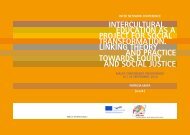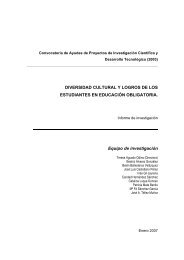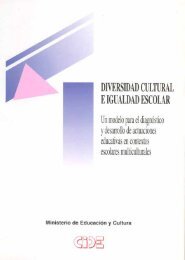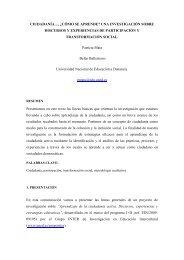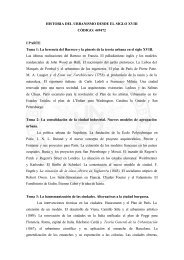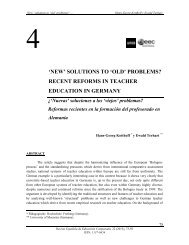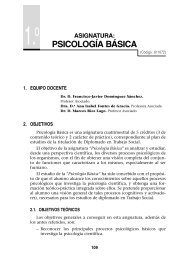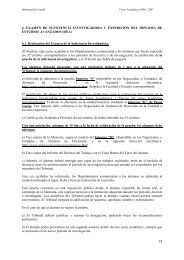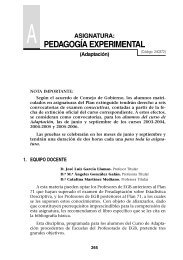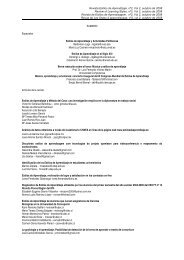Racism: What It Is and How to Deal with It - Uned
Racism: What It Is and How to Deal with It - Uned
Racism: What It Is and How to Deal with It - Uned
You also want an ePaper? Increase the reach of your titles
YUMPU automatically turns print PDFs into web optimized ePapers that Google loves.
A Guide <strong>to</strong> Talking about <strong>Racism</strong> | 8<br />
Introduction <strong>to</strong> the Guide<br />
CONTENTS OF THE INTRODUCTION<br />
• The Guide: Why <strong>and</strong> For <strong>What</strong>?<br />
• Foundations. <strong>What</strong> <strong>Racism</strong> <strong>Is</strong> <strong>and</strong> <strong>What</strong> <strong>Racism</strong> <strong>Is</strong> Not (The Group’s Ideas<br />
about <strong>Racism</strong>)<br />
• Structure<br />
• <strong>How</strong> <strong>to</strong> Use the Guide<br />
• <strong>How</strong> the Guide Was Made<br />
• Dilemmas of Contents <strong>and</strong> Use<br />
The Guide: Why <strong>and</strong> For <strong>What</strong>?<br />
<strong>It</strong> is not easy <strong>to</strong> talk about racism. <strong>It</strong> is a complex reality that is present in our<br />
everyday experience, both inside <strong>and</strong> outside of education centers, although its<br />
existence is usually denied. This was one of our first reflections, as a group, when we<br />
received the proposal from FETE-UGT, in June 2005, <strong>to</strong> carry out an explora<strong>to</strong>ry<br />
study that would put us in contact <strong>with</strong> teenagers’ perceptions concerning racism. The<br />
idea was <strong>to</strong> make the voice of the boys <strong>and</strong> girls who live <strong>with</strong>, suffer, or face racism<br />
heard, <strong>and</strong> <strong>to</strong> obtain relevant information for preparing a guide, intended for teaching<br />
staff <strong>and</strong> adults in general, as well as for teenagers themselves, a guide that would<br />
help them <strong>to</strong> recognize, underst<strong>and</strong>, interpret <strong>and</strong> manage situations of racism.<br />
We made contact <strong>with</strong> teenagers who, because of their characteristics, we prejudged<br />
<strong>to</strong> be possible members of groups that suffer the weight of racism daily: above all,<br />
girls <strong>and</strong> boys who we associate <strong>with</strong> the category “immigrant.” We approached them<br />
on the street, in parks, wherever we though that they could share their ideas <strong>and</strong><br />
experiences in a climate of trust.<br />
We also considered how <strong>to</strong> approach this complex subject <strong>with</strong> them <strong>with</strong>out hurting<br />
their feelings. The term “racism” seems <strong>to</strong> provoke rejection <strong>and</strong> denial: Would it be a<br />
good idea <strong>to</strong> refer <strong>to</strong> it directly, or should we use some alternative path that would<br />
lead us <strong>to</strong> this issue?<br />
Most important of all, we discovered a few things.<br />
We discovered that teenagers have a clear, broad vision of racism <strong>and</strong> its<br />
implications, <strong>and</strong> that they are able <strong>to</strong> distinguish <strong>and</strong> narrate their experiences of it.<br />
We also discovered that our way of thinking is sometimes <strong>to</strong>o limited <strong>and</strong> biased, that



